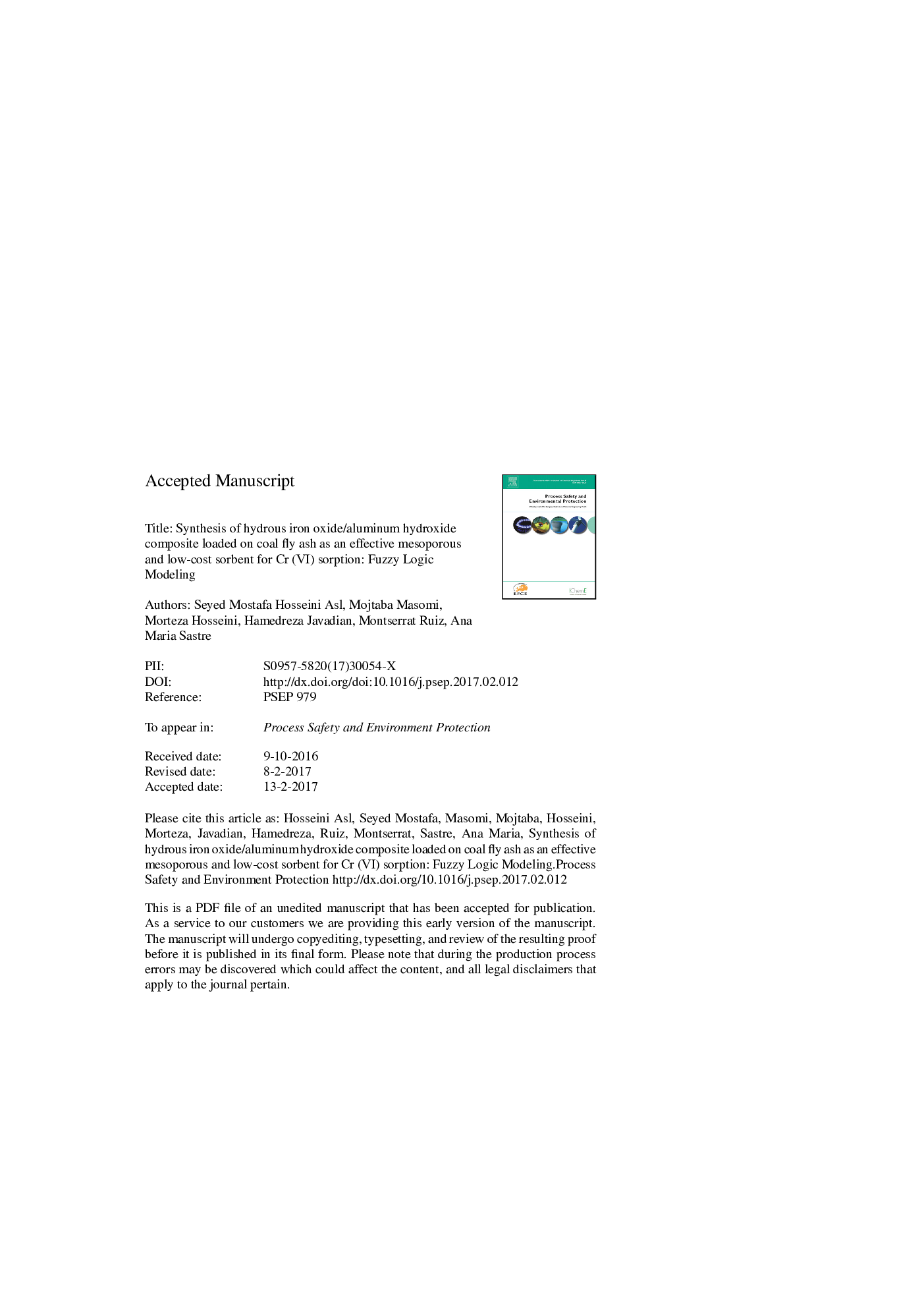| Article ID | Journal | Published Year | Pages | File Type |
|---|---|---|---|---|
| 4980979 | Process Safety and Environmental Protection | 2017 | 49 Pages |
Abstract
The aim of this research was to estimate the possibility of using synthesized hydrous iron oxide/aluminium hydroxide composite loaded on coal fly ash (FA3) as an efficient sorbent for Cr(VI) sorption from aqueous solution. In this regard, dissolution and precipitation processes were performed to rearrange and load the intrinsic iron and aluminum on the surface of fly ash. Different characterization techniques including XRD, XRF, FT-IR, SEM, LPS and BET surface area were applied to analyze the sorbent properties. Moreover, sorption kinetics were studied using Morris-Weber intra-particle diffusion, Lagergren pseudo-first-order and pseudo-second-order models. The kinetic analyses indicated that pseudo-first-order model controlled the sorption process. In order to estimate the sorbent capacity, Langmuir, Freundlich and D-R models were applied. The thermodynamic parameters of Cr(VI) sorption were also studied. In addition, removal efficiency of Cr(VI) was predicted using the developed fuzzy logic model. The fuzzification of four input variables including pH, contact time, adsorbent dose and initial Cr(VI) concentration versus removal efficiency as output was carried out using an artificial intelligence-based approach. A Mamdani-type fuzzy interface system was employed to fulfill a collection of 24 rules (If-Then format) using triangle membership functions (MFS) with seven levels in fuzzy sets. The proposed fuzzy logic model demonstrated high predictive performance with correlation coefficient (R2) of 0.95 and acceptable deviation from the experimental data, confirming its suitability to predict Cr(VI) removal efficiency. Based on experimental data and statistical analysis, the synthetized sorbent was effective for treating wastewater containing Cr(VI).
Related Topics
Physical Sciences and Engineering
Chemical Engineering
Chemical Health and Safety
Authors
Seyed Mostafa Hosseini Asl, Mojtaba Masomi, Morteza Hosseini, Hamedreza Javadian, Montserrat Ruiz, Ana Maria Sastre,
